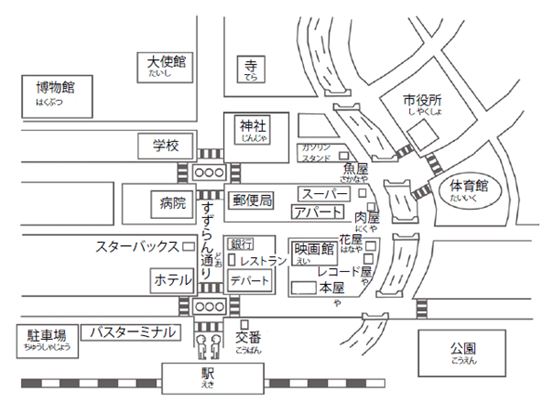The following sentences form a paragraph. Proofread them for inconsistent person and faulty parallelism. Identify the type of each error in each sentence, or select "correct" if the sentence is free of errors
Today, they remain the most popular cookie in America.
A) correct B) inconsistent person C) faulty parallelism
A
You might also like to view...
J’ai cherché une bonne nounou, je _____ en ai trouvé ______!
a. n’… nulle part b. n’… jamais
Two tourists, Ms. Brown and Mr. Smith, are standing in front of the train station and are beginning a day of sightseeing. Look at the map and complete the dialogue. Put a particle inside the parentheses(1 point each), and put a phrase/sentence/word in each of the blanks.

????? ????????????????????????(????)???????????????????(??)??????????( ) 1. ??????
????? ???????????????????(????)?________________?(before we start)??????????????________________?(supposed to meet)????
????? ???????????(????)???________________?(supposed to be waiting for us)????????????????????????????
———————————————????——————————————————
????? ???????????(???)???________________5
(if the parking lot is crowded) ??????(???)????( )6??????????????????
????? ???????????________________?(after stopping by department store)???????????????????????( )8???????????????????????(??)?????
????? ????????????________________?(supposed to be able to come)??????????________________10. (if we go to the department store)???????????????????
????? ?????????????????????????????________________11. (it does not look like there is any coffee shop)??
????? ????????????????????????????????????????????????????????
????? ???????????????????????????
Write the correct pronoun in the blank. Give it to Matthew and (me, I).
Fill in the blank(s) with the appropriate word(s).
When your brain automatically sorts out important information from trivial signals,
it is engaging in a. visualization. b. rote learning. c. schema development. d. selective attention.